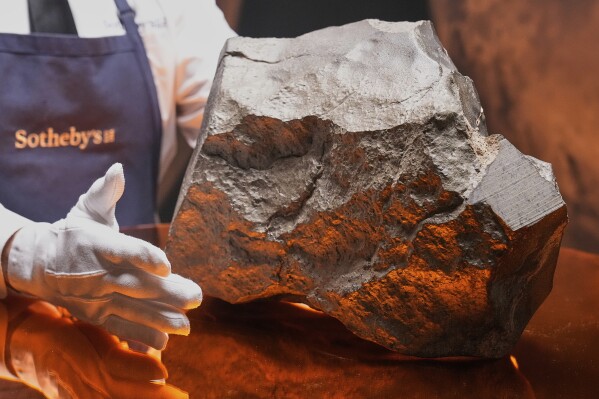Largest Martian Meteorite Auction: Own a Historic Piece of Mars Before It's Sold in New York

Martian Marvel: Sotheby’s Brings the Largest Piece of Mars to Auction
A Fragment from Another World Arrives in New York
In what promises to be one of the most remarkable moments in the history of space memorabilia auctions, a colossal extraterrestrial specimen is set to draw the gaze of collectors, scientists, and enthusiasts alike. Soon, the largest known fragment to have ever landed on Earth from Mars will go under the hammer in New York. This extraordinary relic, weighing in at nearly 25 kilograms, epitomizes both geological rarity and cosmic intrigue. Its arrival on the auction block represents not only an opportunity to own a tangible piece of another planet, but also an invitation to reconsider the boundaries between Earthly and interplanetary natural history.
Origins: A Journey Across the Solar System
The odyssey of this Martian treasure began with a cataclysmic impact that blasted it from the surface of the red planet, hurling it some 140 million miles through the vacuum of space. After a journey spanning millennia, it finally came to rest in the unforgiving sands of the Sahara, where it was discovered in 2023. Known as NWA 16788, this specimen dwarfs previous Martian finds, boasting a mass approximately 70% larger than any other documented piece. Its deep red coloration, glossy fusion crust, and sheer heft make it instantly distinguishable even among its rare peers.
This stone’s entire narrative—from violent ejection on Mars to fiery entry into Earth’s atmosphere—underscores the improbability of its arrival. Most meteorites that survive this descent originate from asteroids, but Martian examples are exponentially rarer, comprising less than 0.6% of all recognized meteorites on Earth. To date, only about 400 Martian meteorites are known, with their collective weight constituting just a tiny fraction of all collected extraterrestrial material. The odds of finding such a massive Martian rock are astronomically small, reinforcing its coveted status among collectors and institutions.
Scientific Significance and Rare Opportunity
Laboratory studies have revealed that the mineral composition of this object aligns with material analyzed by NASA’s pioneering Viking lander, linking the specimen directly to what is understood about the Martian surface. This congruence not only secures its origin but provides a vital reference point for comparative planetary science. Researchers gain an invaluable benchmark by studying the structure, crystallization, and chemical signatures preserved in this sample, shedding light on volcanic activity and geochemical evolution on Mars billions of years ago.
Beyond its value to science, this object stands as a symbol of our fascination with the cosmos. The full journey, from Martian crust to New York display case, evokes the interconnectedness of planetary bodies and human curiosity. For those who attend the exhibition, the opportunity to see—and for one bidder, to own—such a cornerstone of planetary history is simply unprecedented.
Auction Highlights: A Historic Ensemble
This offering is part of a distinctive sale that brings together wonders from both prehistoric Earth and distant planets. Alongside NWA 16788, attendees will find the mounted skeleton of a juvenile Ceratosaurus, unearthed from the wilds of Wyoming, further bridging the worlds of terrestrial paleontology and planetary geology. The juxtaposition of these artifacts in the same room invites a reflection on the vast spans of time and space that have shaped our solar system and planet.
Bidders from around the world will compete for the Martian stone, with opening bids starting at $1.6 million and estimates ranging up to $4 million. Its status as the largest known fragment of Mars, combined with the extreme rarity of such material, are expected to command global attention. The preview period, held at a New York gallery, allows the public to witness firsthand what is arguably the most extraordinary interplanetary object accessible outside of scientific institutions.
Connecting Science, History, and Collecting
The upcoming sale underscores the growing intersection between scientific artifacts and high-profile auctions. As private collectors and museums vie for such objects, their value is amplified not just by scarcity but by the stories they encapsulate. The Martian meteorite stands as a testament to cosmic violence, planetary evolution, and the relentless quest to understand our place in the universe. For one bidder, the close of the auction will mark the beginning of stewardship over a relic that has crossed the gulf between planets, carrying with it the mysteries and majesty of Mars itself.
